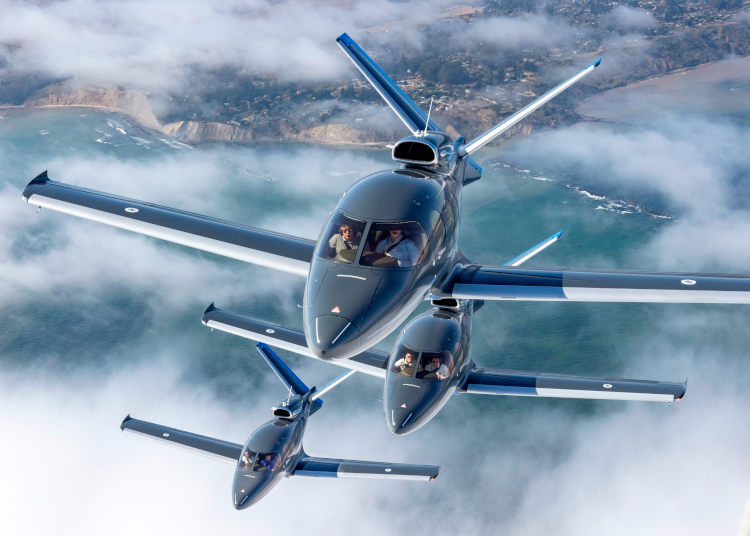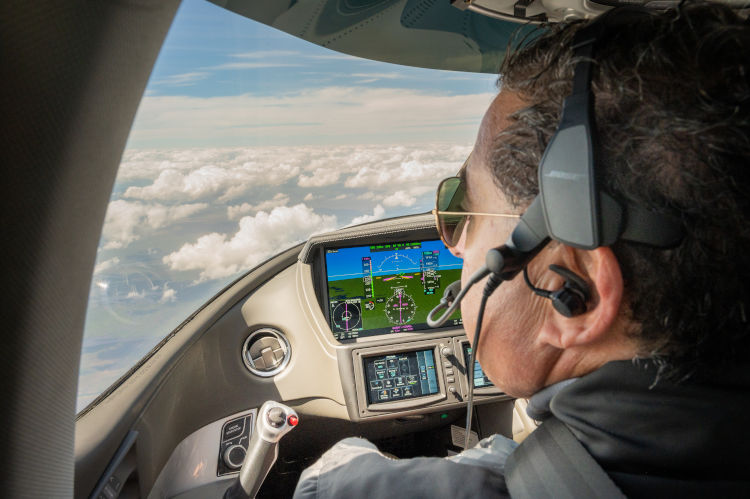VeriJet is a relatively new player in the private air charter market, but it’s carving out an interesting niche. As the largest operator of the low-cost Cirrus SF50 Vision Jet the firm is expanding across the USA. SherpaReport talked to CEO Richard Kane about the company, the plane, charter services and growth. Since starting in 2020 with a fleet of six Cirrus SF50 Vision Jets, Verijet has grown rapidly and hopes to eventually have a fleet of 130 or more aircraft.
Background & Goals
VeriJet was founded in 2020 and is based at Opa-Locka in Miami, Florida. Service launched in the South East US in October, 2020. California service based out of Santa Maria (KSMX) was added in 2021, followed by White Plains, New York in 2022, and a base in Fort Worth, Texas is about to open. According to the company’s website, Verijet is aiming to be the Uber of air-travel, and while several efforts have been made to set up air-taxi services, Verijet could be on to something here. It also offers 100% carbon neutral flights – see more details below.
The Vision Jet can fly into over 5,000 airports across the US and the company points out that “98% of us live within 20 miles of one of those airports”. Founder and CEO, Richard Kane says: “Verijet is the culmination of a decades-long journey to increase the effective speed of door-to-door travel, reduce carbon and noise footprint, and open private aviation to more people – unlocking the fourth wave of high-speed travel, to be the safest, most efficient airline on and for the planet.”
Richard Kane told SherpaReport “My job is to grow private charter, by taking people off commercial airlines” adding “we are gunning for the first-class cabin at United or Delta.”

Cirrus Vision Jet
As mentioned, the fleet consists of the Cirrus SF50 Vision Jet. With room for up to four adults and two children, the Vision also has room for small pets, baggage, and golf clubs. It has a maximum range of 1,275 nm, can take off in as little as 2,036 ft and the cabin has a height of 4.1 feet (1.24m) and width of 5.1 ft (1.56 m).
Verijet currently operates a fleet of 23 Vision Jets, making it the world’s largest operator for these planes. Nineteen of the planes are used for revenue flights and four are used for training says Richard Kane, who is clearly a huge fan of the aircraft. “Many feel it’s the smoothest jet they have ever flown” he says, and adds “20% of customers are afraid of flying until they fly Verijet.”
The aircraft has some very unique features, which provide a sense of safety. It is the only jet which has a whole aircraft parachute, the Cirrus Airframe Parachute System (CAPS). This can safely land the whole aircraft if it needs to be deployed. Cirrus has been putting these into its smaller aircraft for many years, and there are several examples of these landing the plane down in one piece. It also has Garmin’s autoland system, the Garmin Safe Return Emergency Autoland which, on the press of a button, can land the aircraft if a pilot becomes incapacitated. In addition to all this the plane has long range glide ratio of 14.7:1, meaning that it can for instance glide almost 150,000 ft (28 miles) from an elevation of 10,000 ft if needed. As a pilot or passenger you really hope none of these are needed, but they all add to a feeling of comfort with the plane.
The flight deck is optimized for single pilot operation and Verijet operates with one pilot on each flight – and feels very comfortable with this given all the above safety features. Note, this is in contrast to most charter and fractional jet operators, who have two pilots in their cabins and also tend to fly bigger jets, which don’t have the same features.
With just a single jet engine the SF50 is relatively light on its fuel usage. Verijet says the plane only uses 56 gallons per hour on a regular flight. This is very low compared to other light jets which use from 75+ to 150+ gallons per hour, and it is also more economical than many turboprops.
The trade off is that the SF50 is slower than other jets, having a max speed of 311 knots (358 mph, 576 km/h). But for the typical shorter missions this has little impact on overall travel time.

Sustainability
VeriJet is geared to providing a greener air service by reducing carbon emissions. Choosing the Cirrus Vision Jet was a conscious part of that decision as the jet is known for its fuel-efficiency, using as little as ¼ of the fuel that similar jets in its class typically use. Furthermore, the jets are able to use sustainable air fuels (SAF). To help further reduce emissions from ground-based travel, VeriJet flies to smaller and regional airports that are closer to the client’s eventual destination.
In a further move to be completely carbon neutral, Verijet recently announced a partnership with 4AIR to purchase credits which will offset any remaining emissions. This partnership will list Verijet as “Level One Carbon Neutral.” The company also offers clients the option of purchasing additional carbon offsets. As SAF becomes more readily available, Verijet will also work with 4AIR to purchase more of this fuel.
Verijet Flying Options
The company offers a couple of ways to fly on its fleet. Either one off charters or prepaid jet cards. For charters the company has a real time quoting tool on its website, where base rates are $4,000 per hour plus taxes and there are no repositioning fees within 600 nautical miles (about 700 miles) of one of the base locations.
The Verijet Jet Card
There are currently three jet card options available in 25-hour, 50-hour and a limited number of 100-hour jet cards. Details are below:
| Cards | 25 Hour | 50 Hour | 100 Hour |
| Card Cost | $100,000 | $187,500 | $350,000 |
| Hourly Rate | $4,000 | $3,750 | $3,500 |
| Agreement term | 12 Months | 15 Months | No Expiry - subject to CPI increase |
| Flight Cancellation Deadline | 120 Hours | 72 Hours | 48 Hours |
There is no membership fee, no peak booking days and no surcharge on any of the cards. The minimum flight time is 60 minutes on all the cards and all flights are on the Cirrus SF50 Vision. Buyers of one of the hundred limited edition 100-hour cards will also have the opportunity of participating in Founders Club curated adventures.
Richard Kane told SherpaReport that the typical pattern is for a customer to try the first flight, and then fly four more times before buying a card. Verijet finds that the average occupancy for their flights is just 1.53 people and the average trip is about 1.5 hours, in other words less than 500 miles.
One potential downside is that there’s no bathroom on the SF50, but as Richard points out, on a typical 1.5 hour flight you don’t need one. And in 8,000 flights he says they have only stopped twice for a bathroom break and both were for the pilot.
Verijet had one customer who flew from Key West, FL to Jackson Hole, WY – over 2,000 miles – not something that the plane was planned for, and requiring fuel stops along the way, but Richard Kane says the Vision Jet “reignites a love of flying” - he’s very much a fan.

